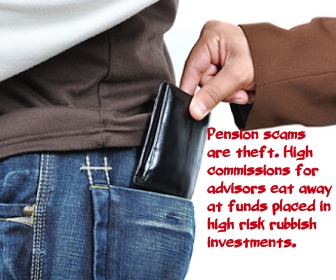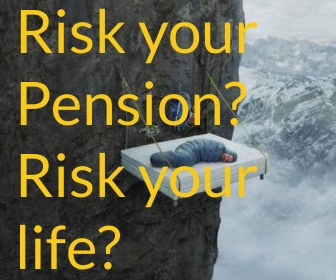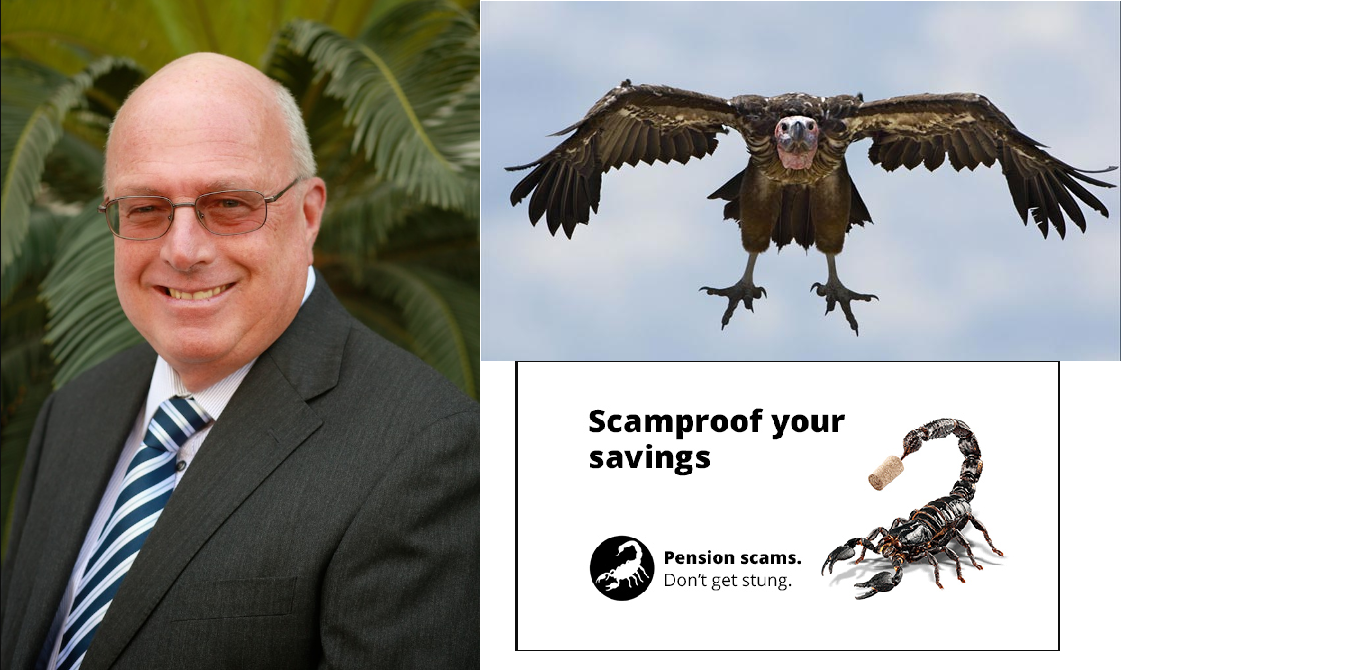How do you feel about risks? What if someone you trusted put you at risk?
How would you feel if you or your life savings were placed in serious risk and you had no idea it was happening until long after the loss? What if someone you
This has happened and is happening to pension holders all the time. Financial Advisers will measure all the facts of your finances, assess your appetite for risk and still invest your valuable funds in investment scams, all with the sole intention of lining their own pockets.

Adventure is thrilling. Risks give a huge adrenalin rush. Everything from bungy jumping to backing a horse on a day out at the races.
Let’s be realistic though, most risks are measured. 99.99% percent of
And a day at the races, well if you come home with winnings it’s a bonus.
These are risks that really are about fun.
Pension Scams are real
The last ten years have seen dozens of pension and investment scams; Capita Oak, Salmon Enterprises, Dolphin, Baxendale Walker, Windsor, Blackmore Global, Trafalgar Multi Asset Fund/STM, Fast Pensions, Henley Retirement Benefit Scheme, Westminster, London Quantum, just to name a few. There are literally hundreds of these scams in operation all around the world promoted by dodgy IFA’s. They have taken millions of pounds from unsuspecting victims and invested them into all sorts of rubbish, death bonds,
This is something that is continuing and growing to the extent that is pretty much an epidemic. Yes, there are certain authorities such as the UK Pensions Regulator looking into this matter and are suggesting that “Badly run schemes need to improve or consolidate”.
The climate around these pension scams is ripe for change. We want to be part of that change and are proposing 10 Standards as the seed for that change.
Thousands of victims have already lost all or most of their pensions. In fact, these scams are nothing more than broad daylight theft.

Pension Scams are white collar theft
Many do not realize they are being scammed until long after the loss. This is the level of cunning deployed to launch and maintain these scams. An IFA can watch a victim sign the documents to transfer their pension from a perfectly good defined benefits pension – and know that they will lose a big chunk of their fund.

The fine print on the purchase of death bonds (which pay high commissions to the advisers) is often overlooked. The advisers are, more often than not, masters in the art of gaining confidence. They develop a rapport with their clients that convinces them that nothing can go wrong. The client trusts them. All the while the only thing the adviser is after is the commissions.
In fact, the scammers use the fact finding process as a prop to give them an air of authority. This gives them an opportunity to “cosy up” and lull the victims into a false sense of security.
Standard No 4. Fact Find and Risk Assessment
Our fourth standard is about the fact find and risk assessment process. Done properly, these are absolutely critical to any major decision around investments, pensions, and transfers.
Two of the key (ideal) outcomes from a proper fact find are:
- The adviser gets a complete picture of the type of client he is dealing with. Everything about the client’s income, assets, and liabilities are examined in detail.
- The client understands some of the details of the factors that need to be considered when making a serious financial decision such as a pension transfer. The fact find gives them an insight into the issues at stake for their own personal financial security.

Secondly, there is a stage in the risk assessment process which is related but given its own part in the discussion between the client and the adviser. It is hugely important.
This is the matching of the risk profile of the client to the risk or likelihood of loss in any particular investment. The client should understand their own appetite for risk and the level of risk that comes with any investment or arrangement.
The risk assessment is the cornerstone to all financial arrangements and investments.
People can be high, medium or low in terms of their risk profile. Most investors are conservative, low-risk investors who value their savings and wish to preserve them at all costs. In consultation with an adviser, they are looking to match their appetite for risk with that of the investments offered. Capital protection is paramount for most people.
Risk profiling should determine whether an investor should transfer their pension or not. It should also determine what they transfer to – and whether the transfer is absolutely necessary (and not just an opportunity for an opportunist adviser to earn commission).
The number of people who are true gamblers in this world is actually very small. The average person is willing to gamble a few quid on a lottery ticket – but not their entire life savings. This means that the ordinary person wants to keep their investment safe and that should be clear and obvious after a proper risk assessment is carried out.

Low Risk Investors are Vulnerable
Funds suitable for low-risk investors are going to have to be equally non-risky. It’s not so hard to match the non-risky investor with the non-risky scheme. But it is a fact that the non-risky schemes do not pay high commission to the adviser. This can make them less attractive for non fee-based advisers to propose as options.
Unfortunately, only too often the scammer uses the fact find and risk assessments as props to convince the victim that they are with a hard-working adviser who is interested in them. The truth is the scammers
Currently, in Spain, there are criminal proceedings against pension scammers and their affiliates. Justice will be sought for the thousands of pension scam victims. Hopefully, this will go some way to making these types of scams – such as the one run by Continental Wealth Management – a thing of the past.
A Financial Revolution is the only way forward
We want to make the facts known, the truth exposed and the world of QROPS and pension transfers something other than a black hole for valuable life savings. One of our key tools is the 10 standards. This is a list of 10 standards that all pension transactions should be able to meet.

The 10 standards should help stamp out pension scams. That is part of our vision at Pension Life. Of course, this is bad news for the advisers who have funded their lavish lifestyles of the backs of people with pensions to transfer. However the thieving needs to come to an end no matter how much it cocks things up for crooked advisers.
There is no room for ambiguity. The majority of people scammed from their pension are cautious investors who dearly value their pension and the security that is supposed to come with it. They are not looking for anything that carries risk and they need their capital to be protected.

In our story in a recent animation on the Pension Life Youtube channel, we have a patient who is in a critical situation. There are risks to his life and risks to his ability to walk. Both sides of the medic team present their opinions – but in the end, they go with the safest option. This is what we want to see happening for all pension transactions. The analogy highlights how once all the facts are gathered through numerous tests, the correct course of action can be taken for the patient. The facts are important, and measuring the risks are important. Only once these are completed can a proper decision be made.
John Smith – a nurse – is the lead character in our story. He has been scammed and lost more than half his pension. The story draws to a close with a reflection on how his interests were not looked after when he was sold a pension transfer. His risk profile was not respected when he was advised. Once a scam inevitably collapses, it is important to see the same level of urgency being applied to rescuing and saving the victims – as well as bringing those responsible to justice – as we see in any medical emergency.

Complaints are being made
With the civil and criminal proceedings against rogue advisers and insurance companies gathering momentum, it is no longer a question of “IF” but “WHEN” the scammers will be brought to justice.


